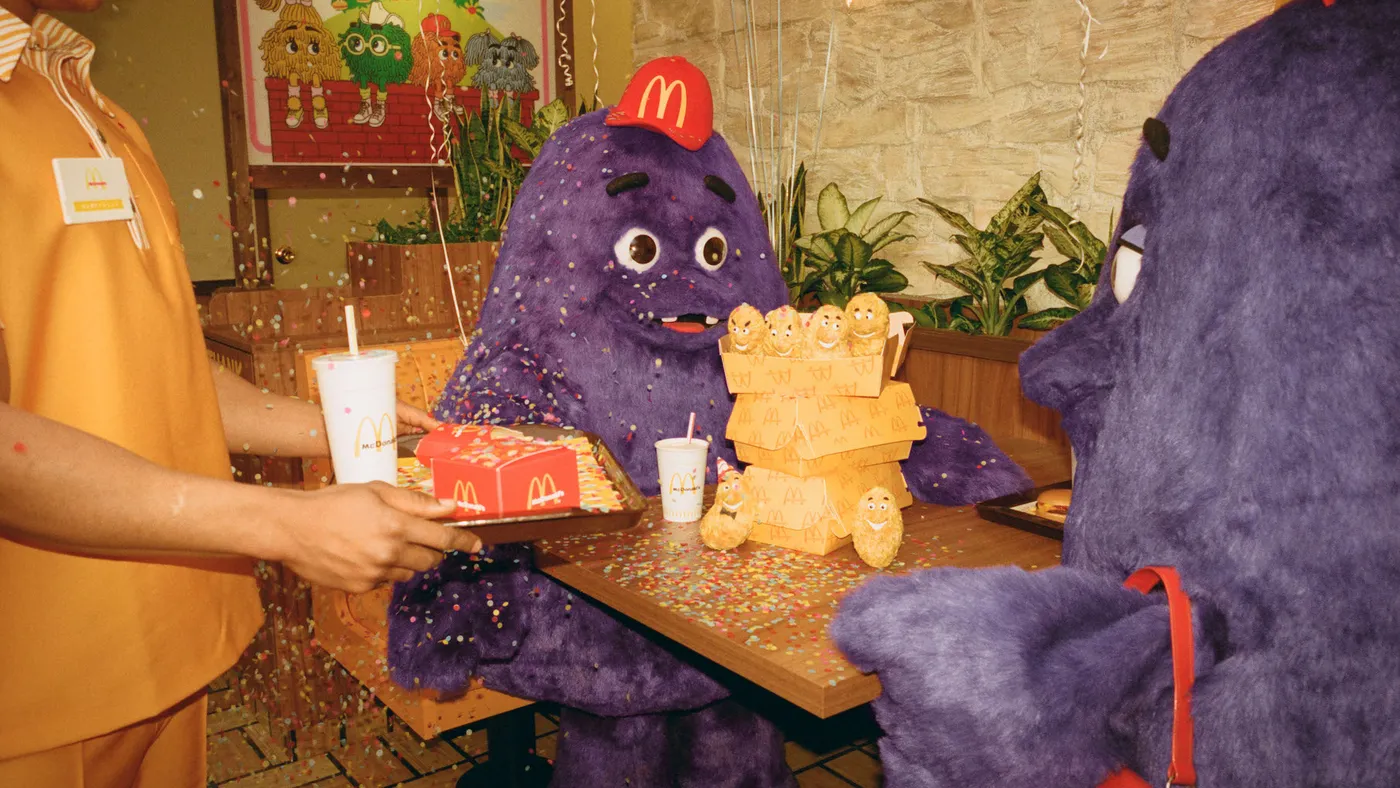Despite a better-than-expected economic climate, a preponderance of challenges acted as creative handcuffs for marketers in 2023. The few brands that were able to break through relied on tried-and-true tactics rather than creative disruption.
The tone of 2023 was set early by a Super Bowl ad season described by some as safe, lazy and boring. Marketers never seemed able to get out of the block as the year went on. Most noteworthy efforts fell into the categories of rebrands, refreshes and repositionings as marketers sought to reconnect with evolving consumers rather than wowing them with splashy campaigns.
On the media front, surging spend on retail media and connected TV were met with concerns about fraud, fragmentation and FTC intervention. And while generative artificial intelligence dominated headlines — replacing last year’s shiny object, the metaverse — brands were not able to incorporate the tech into their advertising in a meaningful way, with one notable exception.
Instead, successful marketers leaned even more aggressively into campaigns around nostalgia and pop culture, sparking joy for otherwise beleaguered consumers. With that in mind, Marketing Dive has assembled the standout creative work from 2023: Campaigns that made a difference, even if the playbook remains familiar with marketing at a crossroads.
McDonald’s shakes loose for Grimace’s birthday
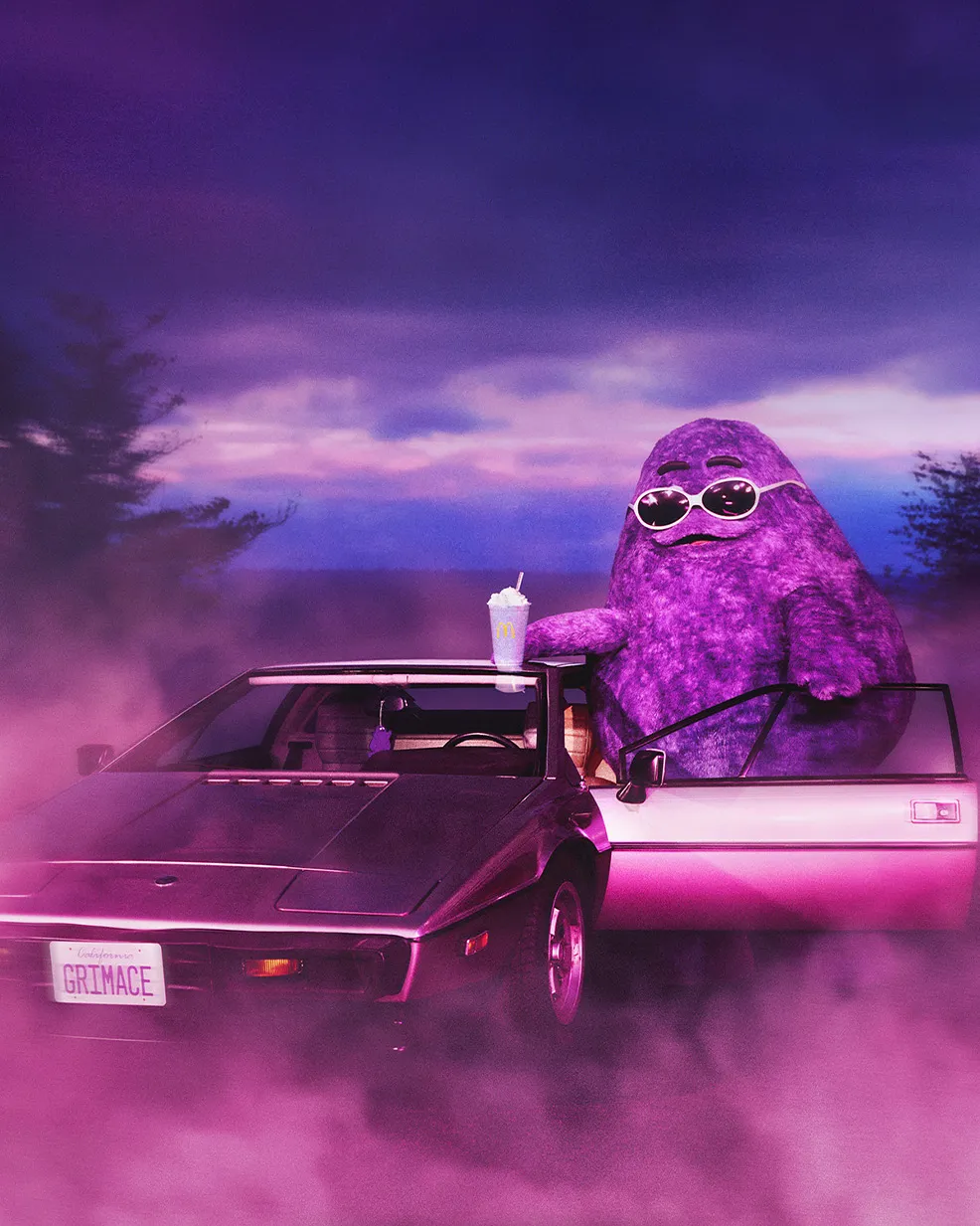
No stranger to turning childhood nostalgia into buzzy marketing, McDonald’s struck gold — or perhaps, purple — with a summer promotion around brand mascot Grimace’s birthday. Paying homage to memories of birthday parties at PlayPlaces, the multichannel campaign included ads, an 8-bit video game, merchandise, a Snapchat augmented reality experience and a phone number to text with birthday wishes.
The most engaging element of the campaign was a limited-edition purple shake that drove more than 3 billion views on TikTok and helped boost sales growth. In a surprising viral trend, young consumers flocked to the platform to share clips of themselves drinking the berry-flavored treat and imagining surreal, often horrible side effects.
“Part of showing up authentically in culture means sharing the pen with fans so they can make the brand their own,” said JJ Healan, vice president of U.S. marketing, brand, content and culture at McDonald’s, in emailed comments. “And sometimes, that means they take the conversation in an unexpected direction. But we’re here for however they want to celebrate with us. Thanks to our fans, Grimace’s Birthday was one of our most socially engaging campaigns of all time.”
The Grimace birthday campaign was billed as a continuation of McDonald’s efforts to meet consumers at the intersection of nostalgia and culture, a theme to which the QSR continues to return. The marketer in November partnered with Crocs (another brand that has benefited from a cultural obsession with nostalgia) for a limited-edition line of shoes, socks and Jibbitz charms inspired by Birdie, the Hamburglar and — of course — Grimace.

Mattel says, ‘Hi, Barbie!’
Mattel and Warner Bros. “Barbie” movie was nothing short of a global sensation, generating $1.36 billion at the box office, with sales of the toy up by 25% after the film’s release. Numbers like these mark a turnaround for the brand from a decade ago when it was losing social currency with the parents who make purchases despite retaining an affinity with kids. That all changed this year, explained Lisa McKnight, executive vice president and chief brand officer at Mattel, during an Advertising Week panel.
“The perception has only improved. Parents with daughters and young kids alike really see [Barbie] as a role model, see this brand as something that is connected to culture, that is inclusive, empowering, and celebratory and fun, and that's important, too,” the executive said. “You want to be purpose-driven, but you also want to bring joy, fun and a little bit of entertainment — that’s what people are looking for.”
This year, Barbie was seemingly everywhere as brands of all stripes looked to get in on the action. Dating app Bumble gave consumers the chance to match with characters from the film while a Barbie selfie generator went viral with 13 million users. Barbie’s significant market penetration was a win for both the brand and partner marketers.
“[There were] literally over 165 partners around the world on this movie, and we said ‘no’ to people,” McKnight said. “The engagement level — the amount of people that wanted to have a playdate with us — was incredible.”
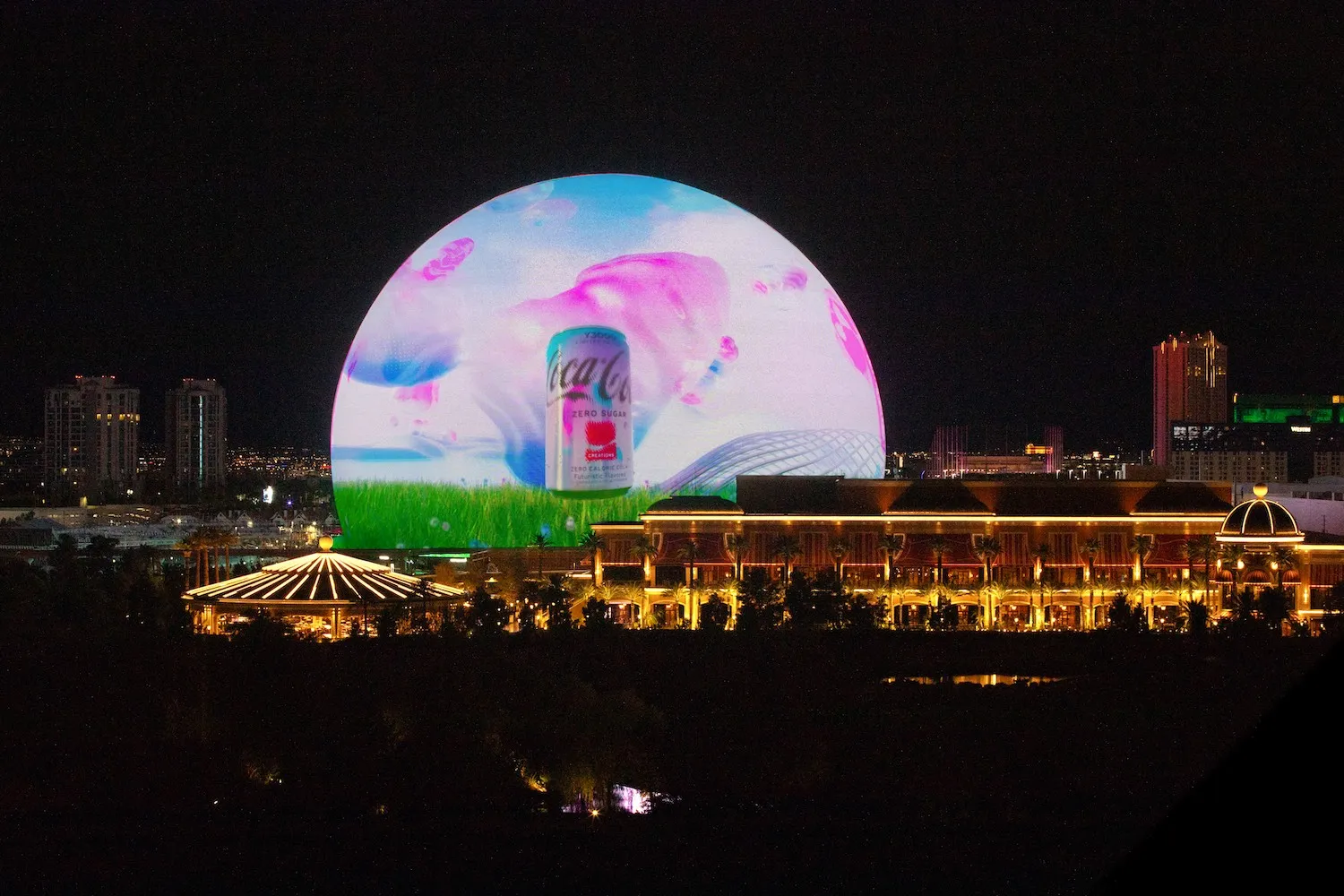
Coca-Cola leads the way with generative AI
The hype around generative AI made it the year’s biggest story across marketing, technology and culture at-large. But even as tech giants and agency holding companies made huge investments, most brands have not fully embraced generative AI in their creative efforts — with some noteworthy exceptions.
Coca-Cola jumped on the hype train early as the first marketer to leverage a partnership between management consultancy Bain & Company and OpenAI, the developer of AI software like ChatGPT and DALL.E, to launch its “Create Real Magic” platform. Since then, Coke has used generative AI at music at festivals, at a takeover of the Las Vegas Sphere and to make digital holiday cards.
Coke used AI to help create a new beverage — a launch that saw strong initial results, per a recent earnings call — and the company continues to look for both consumer-facing and non-consumer-facing applications of the technology, Selman Careaga, president of the global Coca‑Cola category, told Marketing Dive.
“As long as we feel that we can create something that people can engage with and create a good experience for our brands, we will definitely continue to use the tool,” the executive said. “And also, to create, internally, some of our processes — if we can make something faster and use better insights, as well, I think we’ll continue to use that tool.”
As generative AI moves from buzz to use cases, expect marketers looking to create magic of their own to follow Coca-Cola’s lead into 2024 and beyond, as Careaga hinted at “other exciting stuff coming up that we're working on.”
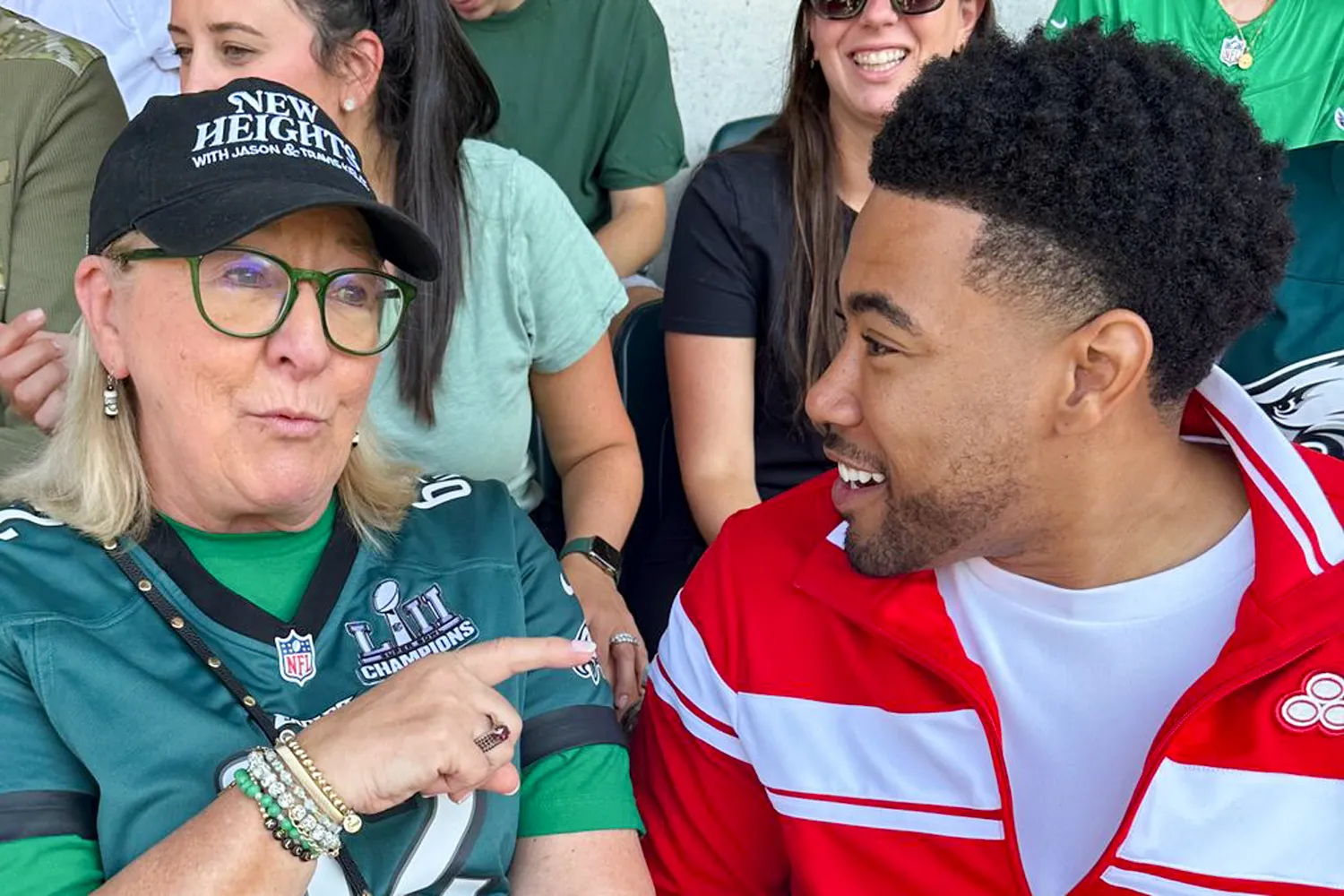
State Farm’s red era
The stars aligned for State Farm this year for a campaign which leveraged the hype surrounding the relationship between Kansas City Chiefs tight-end Travis Kelce and Taylor Swift. During an Eagles game on Oct. 1, Jake, the State Farm mascot, cozied up to Donna, mother of both Travis and Philadelphia Eagles center Jason Kelce. During the game, Jake sat with Donna and recreated moments from her interactions with Swift the week prior.
The stunt, which saw the pair eating chicken nuggets, among other callbacks, was made possible through a collaboration with Maximum Effort, which is owned in part by Ryan Reynolds, a personal friend of Swift. The whole thing came together over a very short period of time.
“The truth is, something like that only happens when you create the conditions for it years, decades in advance,” said Alyson Griffin, head of marketing at State Farm in an interview with Marketing Dive. “It’s rare that you can catch lightning in a bottle by chance… brands have to sort of work on their brand and make the conditions right so that something like that can happen.”
Donna and Jake’s adventure paid off for the brand, equivalent to the effect of 1,700 cable ads, according to Griffin. There was also a 15 times search increase for State Farm online, while State Farm advertisements that aired during the game proved more effective than usual.
Swift has become a marketing darling in recent years, especially with her Eras Tour set to generate $4.1 billion, making the solo tour the highest-grossing in history. Her star power is so strong, Heinz came up with a new condiment, “Ketchup and Seemingly Ranch," in less than 24 hours after a tweet about her choice of condiments at a Kansas City football game went viral.
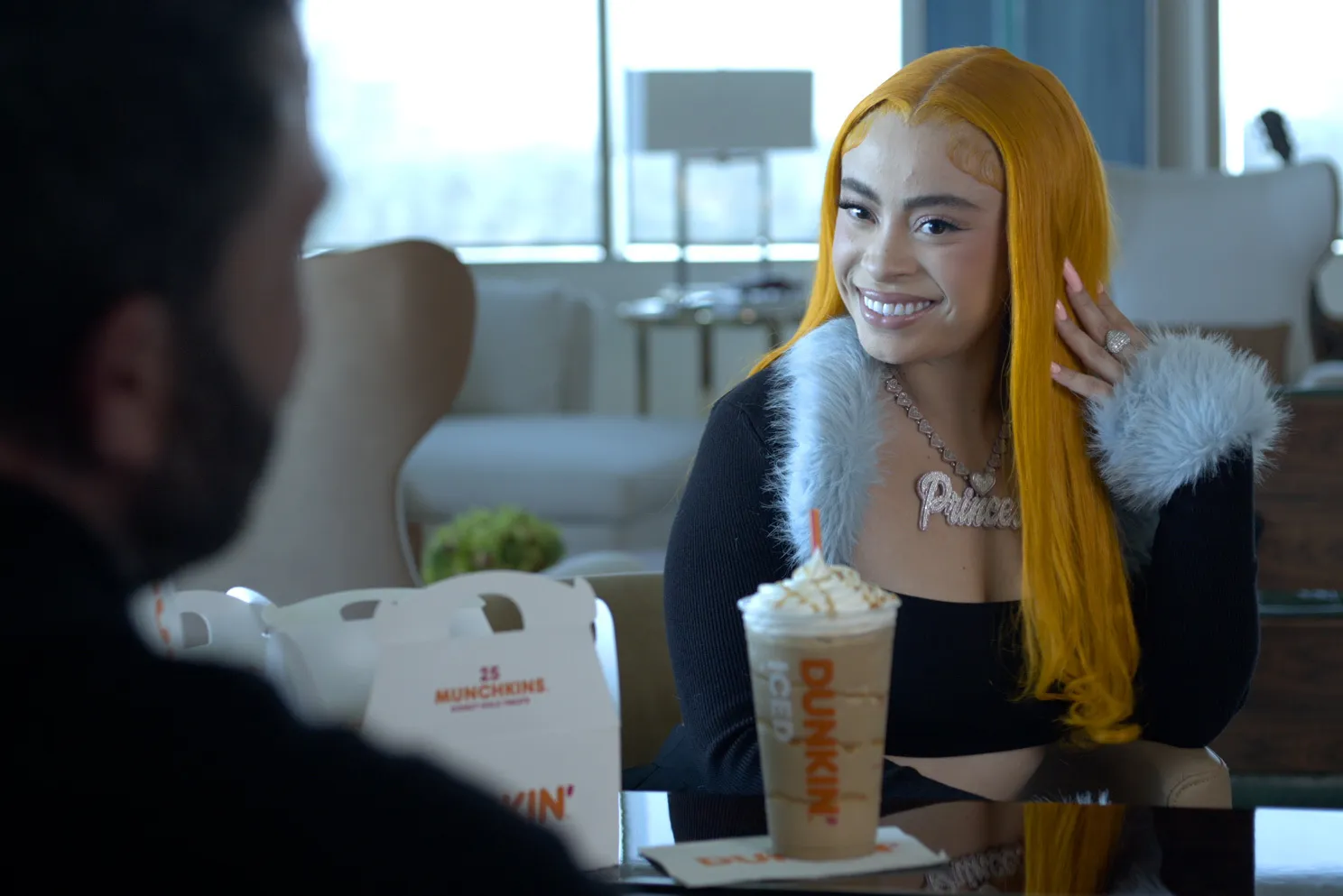
Dunkin’ builds brand with Ben Affleck, Ice Spice
Amid a sea of forgettable celebrity cameos and goofy humor at the Super Bowl was one union that played to the strengths of both the brand and the ambassador: Ben Affleck’s appearance in a Dunkin’ ad that the Hollywood star directed.
The partnership acknowledged long-running memes about the Boston native’s love for the Massachusetts-based breakfast spot and managed to deliver both authenticity and actual laughs. Dunkin’ didn’t stop there: In April, it returned with a spot that played off Affleck’s relationship with Matt Damon, his partner in production house Artists Equity, with which Dunkin’ recently formalized a relationship.
Then, in a push to engage with younger consumers, Dunkin’ enlisted upstart rapper Ice Spice to name and promote a limited-time drink that blended the chain’s Pumpkin Munchkins Donut Hole Treats into its Frozen Coffee, an effort Dunkin’s marketing team was able to pull off by moving at “the speed of pop culture,” CMO Jill McVicar Nelson said in emailed remarks.
“Connecting the brand to culture isn’t just about being trendy for the sake of it or for celebrity cache — we use these moments to keep Dunkin’ top of mind as a daily ritual, and to create affinity with the next generation of coffee drinkers,” the executive said.
In the same way the chain played off Affleck’s pop culture association with Dunkin’, the Ice Spice Munchkins Drink pulled inspiration both from Dunkin’s donut holes and Ice Spice’s fan base, known as “munchkins,” as a sweet-toothed offering for consumers who never saw Affleck and Damon in 1997’s “Good Will Hunting."
"Our Ben Affleck and Ice Spice campaign was such a fun way to take tried and true pumpkin spice season up a notch with a star-powered collaboration no one saw coming,” Nelson said. “Their connection and shared genuine love for Dunkin’ made the spots resonate with audiences across all demographics and interests.”

Pepsi marks visual overhaul with 125th anniversary marketing blitz
Brand refreshes have been in vogue in 2023, but few have met the moment like Pepsi, which unveiled a total design overhaul — its first in 14 years — in the spring. The new look’s official introduction was timed to celebrate the brand’s 125th anniversary in the fall as part of a monthslong marketing blitz.
Years in the making, Pepsi’s rebrand swapped the soda’s muted color scheme for an electric shade of blue paired with sharp black tones. The refresh, which emphasizes its zero-sugar offering, saw the PepsiCo marketer pivot away from minimalist branding to instead embrace a louder, more vibrant look. It’s a theme that others have adopted recently and one meant to embrace what Pepsi bills as a “disruptor” reputation.
Pepsi in August kicked off 125 days of promotions spanning traditional spots, social content, SMS promotions and experiential ploys, including a Pepsi 125 Diner concept. Nostalgia is a strong focus of the marketing, which has manifested in multiple ways, including through the reimagination of decades-old collabs and the resurrection of past commercials from stars like Madonna. Each element is meant to celebrate “Pepsi’s past in the service of building Pepsi’s future,” according to Jenny Danzi, senior director for Pepsi Trademark.
“We are fully ourselves with this rebrand and we’ve seen a really good response — people want merch, people love the product,” said Danzi. “People are very clear that this is the Pepsi they’ve known and loved and we think it’s making us appealing to audiences that might not have been thinking about Pepsi top of mind.”

Taco Bell liberates Taco Tuesday
Taco Bell looked to free Taco Tuesday from its trademark shackles in 2023. Eventually, LeBron James got in on the action. During a 30-second advertisement, the basketball star could be seen being “bleeped” every time he attempts to say the previously trademarked slogan.
The brand ultimately found success in July after Taco John’s abandoned the trademark which it had held in every U.S. state with the exception of New Jersey since 1989. The rival chain announced it would donate $100 per location to the Children of Restaurant Employees (CORE), calling on Taco Bell to do the same.
To celebrate the liberated trademark, Taco Bell teamed up with DoorDash to give away $5 million in free taco orders on Sept. 12. The money went to participating vendors and elevated the relationship between the two companies, which has existed since 2022, beyond the transactional.
“The surest, fastest way to celebrate it was through delivery,” Taco Bell Chief Digital Officer Dane Mathews said at Advertising Week. “If we wanted to reach the taqueros, if we wanted to amplify and celebrate their ability to use Taco Tuesday, the most simplified, straightforward platform to do that with was DoorDash.”
The Yum Brand’s chain saw remarkable success with its efforts, which extended far beyond liberating the trademark. #TacoTuesday generated $1.1 million earned media value (EMV) from 103 creators across 14 posts. This impressive performance makes #TacoTuesday the brand’s 16th most successful hashtag by EMV, according to data from CreatorIQ.
The success of the effort speaks to Taco Bell’s strong position in the QSR landscape. As Mathews said at Advertising Week, “We believe it’s a way for the category and taco culture to continue to thrive in a burger world.”


